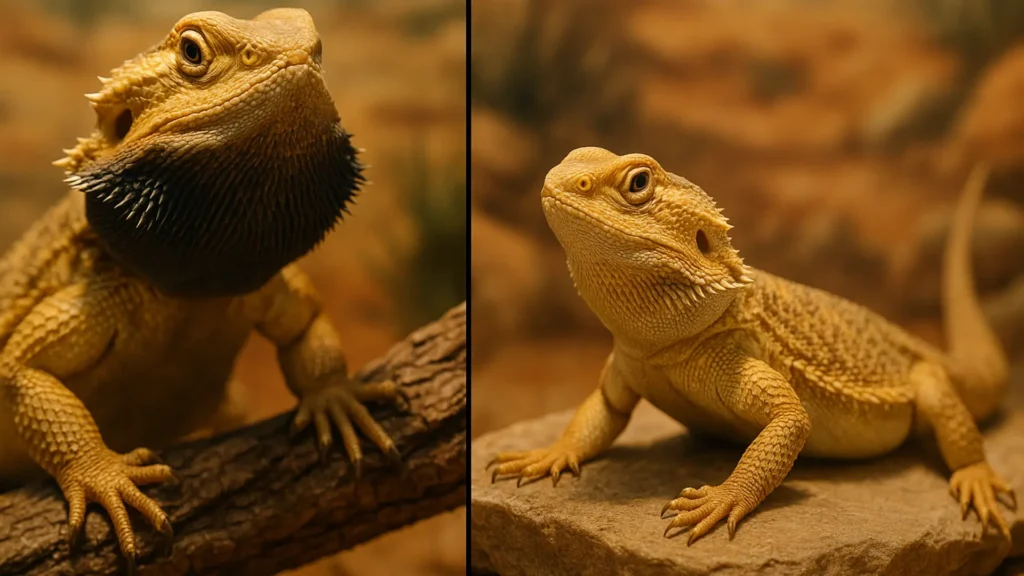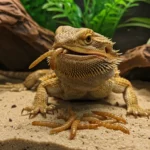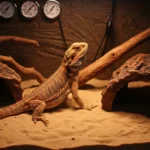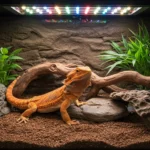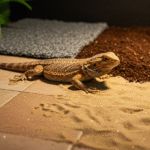When it comes to choosing the right bearded dragon as a pet, the question of male vs female bearded dragon often comes up—especially for first-time reptile owners. While both genders make fantastic companions, there are clear differences in behavior, care needs, and long-term management that every responsible owner should know.
Whether you’re considering adopting one or already have a beardie at home, understanding the dynamics of male vs female bearded dragon care can help you build a healthier, more fulfilling relationship with your scaly friend. From territorial habits to nesting behavior, knowing what to expect from each gender makes a world of difference in how you care for them daily.
In this guide, we’ll walk you through everything you need to know to confidently manage and care for your bearded dragon—no matter the sex.
Do Male vs Female Bearded Dragons Need Different Care?
When it comes to caring for your bearded dragon, gender can play a surprisingly important role. Male and female bearded dragons often have different behaviors, temperaments, and physical needs that may affect how you set up their habitat and handle daily care. Let’s explore the key differences that can influence your approach as a pet owner.
Understanding Sexual Dimorphism in Pogona vitticeps
Sexual dimorphism refers to the physical differences between males and females of the same species, and it’s clearly visible in Pogona vitticeps, the central bearded dragon. While both genders share the same basic body structure, their distinct traits become more pronounced as they mature—especially after 6 to 12 months of age.
One of the most noticeable differences between sexes is the presence of hemipenal bulges in males, located at the base of the tail. Females typically have a smoother, single central bulge in this area. Males also tend to have broader heads, thicker tails, and more prominent femoral pores, which they use to secrete pheromones.
These differences aren’t just cosmetic—they often influence behavior and care. Males may display more territorial or dominant behaviors, while females might need additional support during egg-laying cycles. Understanding the sexual dimorphism in Pogona vitticeps helps owners tailor care routines to meet the specific needs of each gender, leading to healthier and less stressed pets.
By recognizing these differences early, you can provide a more supportive environment based on your dragon’s biological traits.
Why Knowing the Gender Matters in Reptile Care
Understanding whether your bearded dragon is male or female is essential for providing proper care. Gender influences behavior, stress levels, and even how your reptile interacts with its environment. Males are often more territorial and may become aggressive if housed too closely to another male. They might head bob, puff up their beard, or even nip to assert dominance.
Females, on the other hand, can experience stress related to reproduction. Even without mating, they may lay infertile eggs, which requires a nesting area and extra calcium in their diet. Ignoring these needs can lead to serious health problems, including egg binding.
Recognizing gender-specific behavioral triggers—like glass surfing in males or restlessness in gravid females—can help you prevent stress and create a healthier habitat. Territorial behaviors also mean you need to think carefully about enclosure size, layout, and whether co-housing is appropriate.
In short, knowing your dragon’s gender allows you to anticipate their unique needs and avoid unnecessary stress or conflict. It’s a vital part of responsible reptile care.
Link Between Gender and Bearded Dragon Temperament
Gender plays a significant role in shaping the temperament of bearded dragons. In many cases, male bearded dragons are more assertive and territorial. They often display dominant behaviors such as head bobbing, black beard displays, and even chasing or nipping when feeling challenged. These actions are common during hormonal changes or breeding season.
On the other hand, female bearded dragons are usually calmer and more submissive. They may show gentler behaviors like arm waving or passive basking. However, females can also become restless or anxious when preparing to lay eggs, even without mating. This is a natural hormonal shift and may lead to temporary mood changes.
Understanding the link between gender and bearded dragon temperament allows owners to interpret behaviors correctly. It helps reduce stress and create a more supportive environment. For example, knowing a male’s behavior is hormonally driven can prevent unnecessary concern. Similarly, offering proper nesting areas for females can prevent agitation.
Recognizing these patterns ensures better handling, safer interaction, and overall healthier reptiles.
Housing Setup Tips Based on Gender
While male and female bearded dragons have similar basic habitat needs, their behaviors and temperaments can affect how their enclosures should be set up. From territory control to nesting requirements, understanding gender-specific needs helps create a safer and more comfortable living space. Let’s explore how to tailor their habitat based on sex.
Male vs Female Bearded Dragon Territory and Enclosure Size
Territorial behavior is much more common in male bearded dragons and should be a key consideration when planning enclosure size and layout. Males are instinctively protective of their space, especially during breeding season or when exposed to other dragons. If two males are housed too close together—or worse, in the same tank—this can lead to aggressive displays, constant stress, and even physical fights.
To avoid conflict, it’s best to house males separately or use tank dividers if space is limited. These physical barriers help reduce visual contact, which often triggers dominance behavior. Even in solitary enclosures, males benefit from larger tanks—ideally 75 to 120 gallons—to allow them to establish a sense of territory.
Females are generally more tolerant of shared environments, but they still require ample room to move, hide, and bask. A well-planned habitat layout with multiple basking spots, hides, and visual barriers helps reduce stress for both sexes.
Proper enclosure size isn’t just about comfort—it’s essential for preventing territorial stress and supporting natural behavior.
For a complete setup guide that supports both male and female bearded dragon needs, check out our article on how to create the perfect 120-gallon tank.
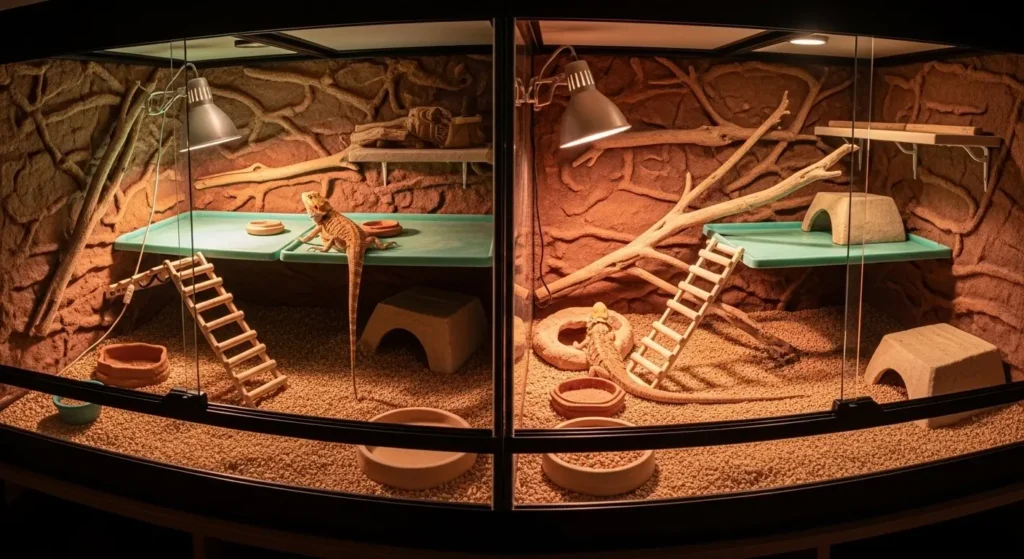
Enrichment and Furniture Preferences
Providing the right enrichment and furniture inside your bearded dragon’s enclosure is essential for both mental stimulation and physical health. While both males and females benefit from a variety of features, their preferences may vary slightly depending on temperament and behavior.
All bearded dragons need natural hiding spots to feel secure. These can include rock caves, hollow logs, or plants that offer cover. Females, especially when nesting or feeling stressed, may use hiding areas more frequently than males. Males, being more territorial, often prefer elevated basking zones where they can perch and survey their surroundings.
Including sturdy branches or platforms helps support natural climbing behavior. It also allows your dragon to regulate body temperature by moving closer to or farther from heat sources. Be sure to vary the height and location of these features throughout the tank to encourage exploration.
A well-enriched enclosure supports a healthy, active lifestyle and reduces boredom-related stress. Whether male or female, your bearded dragon will thrive with a habitat that mimics their natural environment.
Nesting Areas for Female Bearded Dragons
Female bearded dragons may lay eggs even without mating, so providing a proper nesting area is essential for their health and comfort. When a female is ready to lay, she will begin digging and showing signs of restlessness. Without an appropriate space, she can become stressed or suffer from complications like egg binding.
A well-prepared nesting area should include soft, diggable substrate, such as a mix of topsoil and sand. This allows the female to dig a tunnel and deposit her clutch of eggs naturally. The substrate should be slightly moist but not wet, making it easier to shape and tunnel through.
Privacy zones are equally important during this time. Females prefer quiet, low-traffic spots where they feel safe. You can use a hide box or a secluded corner in the tank to provide this sense of security.
Even if your female has never been with a male, her body may still prepare to lay eggs. Anticipating this behavior and offering a proper nesting setup supports her well-being and reduces unnecessary stress.
Lighting and Heating Adjustments
Proper lighting and heating are essential for bearded dragon health, but small adjustments may be needed based on gender and behavior. Both male and female dragons require strong UVB lighting to support calcium absorption and bone development. Without it, they risk metabolic bone disease and other health problems.
However, hormonal behavior can influence how they use light and heat. Males may spend more time in basking areas during territorial or mating displays, puffing their beards and asserting dominance. Females, especially during egg-laying cycles, may alternate between basking and hiding more frequently.
Ensure your enclosure includes a dedicated basking spot with a surface temperature between 95–105°F. The cool side should stay around 75–85°F to allow for proper thermoregulation. Replace UVB bulbs every 6–12 months, depending on type and brand, to maintain effectiveness.
Monitor how your bearded dragon behaves under different lighting conditions. Small shifts in heat preferences or basking duration can signal hormonal changes or stress. By making gender-aware lighting and heating choices, you’ll help maintain a balanced and healthy environment.
Behavior Differences You Should Expect
Male and female bearded dragons often show noticeable differences in how they behave, especially in social or territorial situations. From dominance displays to submissive signals, understanding these behavior differences can help you respond appropriately and reduce stress for your pet. Let’s explore the most common behaviors you might see based on gender.
Dominance Displays in Males
Male bearded dragons are naturally territorial and often display dominant behaviors, especially when they feel challenged or threatened. One of the most recognizable displays is head bobbing, which can range from slow, deliberate movements to rapid, aggressive jerks. This behavior is often accompanied by a black beard, where the underside of the throat darkens and flares outward to appear more intimidating.
These signals are usually directed at other dragons or perceived rivals, including their own reflection. Aggressive posture—such as standing tall on all fours, puffing out the body, or tail curling—often follows. Some males may also lunge or chase when feeling dominant.
These behaviors are not always signs of aggression toward humans but should be taken seriously. Understanding dominance displays allows owners to respond calmly, avoid stress triggers, and separate dragons if necessary. Recognizing and respecting this behavior helps create a more peaceful environment for your pet.
Arm-Waving and Submissive Gestures in Females
Female bearded dragons typically show more submissive behavior, especially when housed near dominant males. One of the most common signals is arm-waving—a slow, circular motion of one front leg that communicates non-aggression. This gesture often indicates submission or recognition of another dragon’s dominance.
Unlike males, females are less likely to display confrontational behaviors. They usually have a more calm temperament, spending time basking, exploring, or retreating to hides. However, stress can cause changes in body posture, loss of appetite, or glass surfing. These stress signals are important to monitor, as they may indicate discomfort or hormonal changes.
While males may also arm-wave occasionally, it is far more typical in females. Knowing how to interpret this body language allows owners to better understand their dragon’s mood and social needs. Providing a secure and low-stress habitat is key to supporting a female dragon’s natural behavior.
Breeding Season Reactions and Hormonal Shifts
During the mating season, both male and female bearded dragons experience noticeable changes in behavior driven by hormone levels. Males often become more active and assertive. They may increase head bobbing, darken their beards, and show more territorial aggression.
Females may grow restless, begin digging, or seek secluded spots as their bodies prepare for possible egg-laying. These reptile behavior changes are natural, but they require careful monitoring. Even females that haven’t mated can lay infertile eggs, making it essential to prepare a nesting area.
Hormonal shifts can also affect eating habits and stress levels in both sexes. Appetite may increase or decrease, and dragons might become more sensitive to changes in their environment. Recognizing the signs of breeding season behavior allows owners to adjust care routines and reduce anxiety for their pets.
Understanding these seasonal changes ensures you’re prepared for what to expect and helps maintain a healthy, low-stress environment throughout the year.
Feeding, Health, and Growth in Male vs Female Bearded Dragons
While male and female bearded dragons share many dietary and health needs, there are subtle differences that can affect their growth, behavior, and long-term wellness. Understanding these variations can help you provide more personalized care for your pet. Let’s take a closer look at how gender can influence feeding habits, development, and overall health
Nutritional Needs of Female Bearded Dragons
Female bearded dragons have unique nutritional needs, especially during their reproductive cycle. Even if a female has not mated, she can still produce and lay infertile eggs. This process demands extra calcium, which supports shell formation and prevents metabolic bone disease. Without enough calcium, females are at risk for serious conditions like egg-binding.
It’s important to provide a calcium-rich diet, including dusted feeder insects and leafy greens like collard greens and dandelion leaves. A calcium supplement with vitamin D3 should also be used a few times per week, especially during egg-laying periods.
Hydration is equally important. Dehydration can make egg-laying more difficult and increase stress. Offering fresh water daily, misting vegetables, and occasional warm baths can help maintain fluid levels.
By understanding and meeting these nutritional needs, you’ll support your female dragon’s health during every stage of life—from normal maintenance to the demanding egg-laying phase.
Comparing Growth and Size: male vs female bearded dragon
Male and female bearded dragons grow at different rates and reach different adult sizes. In general, males tend to be larger, both in length and weight. Adult males can reach 20 to 24 inches and weigh up to 500 grams, while most females grow to about 16 to 20 inches and weigh closer to 350–400 grams.
These size differences begin to appear clearly around six months of age and become more pronounced after one year. Males often develop thicker tails, broader heads, and larger femoral pores as they mature.
While both sexes need proper nutrition and UVB lighting to grow normally, understanding average growth rates by gender helps identify any developmental concerns early. If a female is growing unusually fast or a male is underweight, it may signal a dietary or health issue.
Tracking your dragon’s weight and length monthly is a helpful way to ensure healthy development and catch problems before they become serious.
Health Risks Unique to Each Gender
While many health issues affect both sexes, some are more common in one gender than the other. Impaction, for example, is more frequently seen in males. This can occur when they ingest loose substrate or large feeder insects that are difficult to digest. Males also tend to be more active and territorial, which may increase the risk of injury or stress-related issues.
In females, one of the biggest concerns is egg-binding. This condition happens when a female cannot pass her eggs, which may be due to poor nutrition, stress, or lack of a suitable nesting area. Egg-binding is painful and life-threatening if not treated promptly.
Other risks include dehydration during egg production, calcium deficiency, and reproductive infections. Female dragons need close monitoring during breeding season, even if no mating has occurred.
By being aware of these gender-specific health risks, owners can take preventative steps and respond quickly if something goes wrong. Early intervention often leads to better outcomes and healthier dragons.
Can You House Male and Female Bearded Dragons Together?
Many new owners wonder whether it’s safe to keep male and female bearded dragons in the same enclosure. While it might seem convenient, housing them together comes with serious risks and responsibilities. Before making this decision, it’s important to understand the potential challenges and how to manage them properly.
Risks of Co-Housing Without Breeding Intentions
Housing male and female bearded dragons together without a breeding plan can lead to serious problems. Males are naturally territorial and may become aggressive toward females, especially during mating season. This behavior can result in stress, tail nipping, and even physical injuries if the female tries to escape unwanted attention.
Even outside of breeding cycles, the presence of another dragon can increase competition for basking spots, food, and territory. One dragon may dominate the enclosure, leaving the other anxious or underfed. Prolonged stress weakens the immune system, making both dragons more vulnerable to illness.
In addition, unintended breeding can occur, leading to complications like egg-binding or unexpected clutches. Co-housing should never be taken lightly. If you’re not prepared for the risks and responsibilities of managing two dragons in one space, it’s best to house them separately.
Breeding Considerations and Responsibilities
If you plan to breed your bearded dragons, you must be ready to handle the responsibilities that come with it. Breeding is not as simple as placing a male and female together. You need to consider reptile breeding ethics, proper pairing, and the long-term health of both dragons.
Females can lay multiple clutches of eggs from a single mating, which puts extra strain on their bodies. You’ll need to prepare a suitable nesting site, ensure she gets calcium-rich nutrition, and monitor her closely for signs of egg-binding. Post-laying care is just as important as pre-breeding preparation.
Breeding also raises questions about what you’ll do with the hatchlings. Do you have the resources to care for dozens of baby dragons? Are you equipped to provide proper housing and vet care? Ethical breeding means ensuring you can meet the needs of all dragons involved—not just the adults.
Safe Co-Habitation Tips for male vs female bearded dragon
If you must house a male and female bearded dragon together, take extra precautions to ensure safety. Use a tank divider to separate them visually and physically when needed. This helps reduce stress and prevents constant mating attempts or aggressive displays.
Feeding time should be managed carefully. Always offer food separately and monitor them to ensure both are eating enough. Males can become territorial over food and may bully the female away from the bowl. Separate feeding areas help avoid this problem.
Constant supervision is critical, especially during the first few days. Watch for signs of stress, injury, or dominance. If either dragon shows signs of distress, it’s best to separate them immediately.
Housing two dragons in one tank is rarely ideal, but if it must be done, careful planning and close observation can make the arrangement safer for both pets.
Frequently Asked Questions
How can you tell the difference between a male and female bearded dragon by head shape?
Male bearded dragons typically have broader, more angular heads than females, which helps indicate their gender as they mature.
Are male or female bearded dragons more aggressive?
Males are generally more territorial and may display dominance through head bobbing or black beard displays, especially during mating season.
Do male and female bearded dragons grow to different sizes?
Yes, males usually grow larger than females. Adult males can reach 20–24 inches, while females typically grow to 16–20 inches.
Which has a calmer personality: male or female bearded dragon?
Female bearded dragons are often calmer and less territorial, although hormonal changes can make them restless during egg-laying periods.
What do male vs female bearded dragon tails look like?
Males have thicker, broader tails at the base due to hemipenal bulges, while females have thinner, more tapered tails.
What are femoral pores and how do they differ in male vs female bearded dragons?
Femoral pores are small dots on the underside of a bearded dragon’s thighs. Males have larger, more prominent pores compared to females.
Is there a visual guide to tell male vs female bearded dragons apart?
Yes, clear photos showing the tail base, head shape, and femoral pores can help identify the sex of your bearded dragon.
What are good name ideas for female bearded dragons?
Popular female bearded dragon names include Luna, Cleo, Ember, Ivy, and Saphira. Choose a name that matches her personality and look.
Conclusion
Caring for a bearded dragon isn’t one-size-fits-all—understanding the differences between a male vs female bearded dragon can make a big impact on your pet’s well-being. From behavior and temperament to housing and health needs, each gender comes with its own care requirements. By recognizing these differences early and adjusting your setup accordingly, you can create a more comfortable, low-stress environment for your dragon. Whether you have a dominant male or a nesting female, being informed is the first step to being a responsible and confident reptile owner.

